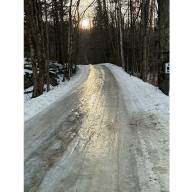By Ned Farquhar
Many thanks to Bob Kogut (Mad River Riders) and Ross Saxton (Mad River Path) for stating in this week's Valley Reporter that the Mad River Riders have abandoned the proposal for a new bike trail in the Phen Basin submitted to the Vermont Department of Forests, Parks, and Recreation and included conceptually in the department's new Camel’s Hump Management Plan. That is good news and I applaud it, although I must report that contrary to the Riders' assertion, the "abandonment" of the plan has not been communicated to the state agency, according to the staffer whom I checked with after reading the Riders' letter in last week's paper.
The Riders' and Path's tone in The Valley Reporter is consistent with how most people in the Mad River Valley try to hear and understand each other, but unfortunately they are not enough to accomplish permanent protection of the Phen Basin per the longstanding conservation easement on the land.
The focus of my letter to The Valley Reporter two weeks ago was that the department and the Riders should not ever consider any proposal to build trails that would violate the existing, permanent conservation easement protecting the Phen Basin from new trails for mechanized uses. The Camel’s Hump Management Plan recently adopted by the state defies the existing legal protection for the Phen Basin. Confirming the plan's conceptual inclusion of the Riders' proposed trail construction, the department's staff indicated to me in an email several months ago that the new Camel’s Hump Management Plan "authorizes" new bike trail construction in Phen Basin.
Perhaps the new director of the Department could speak out on this, and express a commitment by the state not to consider new trails accommodating mechanized recreation in the Phen Basin, and to modify the new management plan to remove this authorization? A bike trail through this valuable 2,500-acre area could wreak havoc on the wildlife habitat, water quality, ecological values, and serenity that were explicitly protected in the conservation easement in 1995.
It will help if any new local trails vision as touted by Ross Saxton and Bob Kogut reaffirms the permanent, protective nature of the existing easement and land protection in the Phen Basin. As stated above, I did not read any such affirmation in their comments in this week's Valley Reporter, although abandonment of the Riders' original bike trail proposal is progress.
Isn't it a shame, and a waste of public time, resources, and energy. that the department does not respect the legal instrument protecting the Phen Basin for its ecological values?
Does the department acquire land and then reject existing ecological protections on the land? What a resonant legal stance for lands protected around Vermont for shoreline and natural areas protection, ecology, agriculture, even perpetually affordable housing. Until the Riders, the Path Association, and, most importantly, the department accept, confirm, and conform to the protective language of the Phen easement, who knows what kind of chaos and destruction might ensue? Planning and visioning exercises will be useless, divisive, and wasteful if the state sticks to its interpretation that authorizing new bike trails in the Phen Basin is legitimate, even when the Riders have abandoned their proposal.
Again, many thanks to trail visionaries and planning entities such as the Waitsfield and Fayston conservation commissions, trail groups, and the recreation district who are trying to develop an appropriate, ecologically sensitive framework for trails in the Mad River Valley.
Corrie Miller, former executive director of Friends of the Mad River, deserves praise for her determined advocacy for such a new framework over recent years. The vision will be an important milestone that helps accommodate desirable trail uses with crucial environmental planning for habitat and The Valley's ecological values. It would be a milestone indeed if the state agency would likewise respect the binding legal instrument that led to the inclusion of the Phen Basin in the Camel’s Hump management unit. For now, no such recognition by the state exists, in defiance of the clear intent and language of. the conservation easement.
Several years ago state agencies played a valuable role in reconfiguring the existing Mill Brook bike and walking trails near the Fayston Elementary School to sharply reduce their environmental impacts. This success in trails cooperation was fairly minimal compared to what the department has wrongly authorized in the much larger Camel’s Hump Management Plan as it affects the Phen Basin. The Riders have stepped away from the Phen bike trail proposal. Now the state should back off from its authorization of the nuclear option for the Phen Basin, and instead confirm the language and intent of the existing conservation easement.
Farquhar lives in Waitsfield.












